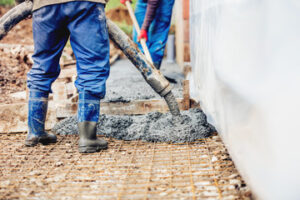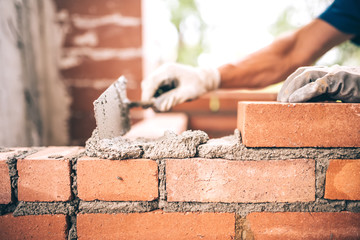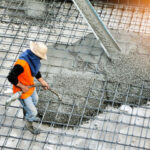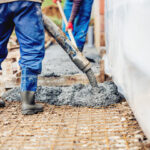Home » Articles posted by Virginia Valdes
Author Archives: Virginia Valdes
Why You Should Have Your Plumbing Inspected
When pipes leak, it can cause damage that requires expensive repair and replacement. Regular maintenance can help prevent problems.

Plumber Westminster does much more than unclog toilets and fix sinks. They design piping systems that disperse water, remove waste, and connect heating and cooling systems. They also inspect plumbing fixtures and pipes for damage and leaks.
A plumbing inspection involves a close examination of all the pipes and fixtures within your home. This includes the water heater, kitchen and bathroom sinks, dishwasher, washing machine, toilets, and any other water-using appliances. In addition, plumbers inspect the drain lines and sewer systems for any leaks or blockages. This is especially important for older homes with aging pipes. Leaks and blocked drains can cause serious damage to your property if left untreated. In some cases, a simple leak or blocked drain can even lead to flooding in your home. These issues are easy to ignore when they occur intermittently, but a regular plumbing inspection can catch them before they become major problems.
Besides being costly, a faulty plumbing system can also pose health and safety risks for your family. Hidden leaks can result in mold growth that affects indoor air quality and triggers respiratory problems. Additionally, if the leaks are located near electrical fixtures, they can create a fire hazard. A professional plumbing inspection can identify these risks and take the necessary steps to correct them.
Plumbing inspections can also save you money on your utility bills. Leaky faucets, toilets, and pipes waste gallons of water every day. A plumber can repair these leaks and improve your home’s water efficiency, saving you money on your monthly bills.
In addition, a regular plumbing inspection can help you extend the life of your pipes and fixtures. By identifying any parts that are approaching their lifespan, you can have them replaced before they break down completely, which saves you money on repair costs and replacement expenses.
If you’re thinking of buying a new home, it’s essential to have the plumbing inspected before making the purchase. An inexperienced homeowner may not notice any issues with the plumbing, but a professional plumber can spot problems before they escalate into expensive repairs.
A plumbing inspection can be performed in conjunction with a home inspection or on its own. A typical plumbing inspection will include testing for water pressure, checking the location of leaks, evaluating fixture condition and functionality, and testing the sewer line for any signs of clogs or backflow. The plumber will also check the drainage system for any clogs or issues with the sump pump. In some instances, a plumber may also use video inspections to examine hard-to-reach areas of the plumbing system, such as under sinks and in the basement.
Water Pressure Testing
Water pressure testing is the process of evaluating the integrity and functionality of your home plumbing drain lines. By applying a controlled amount of water pressure to the drain lines, plumbers can determine if there are leaks, what size the leak is, and even locate its exact location within the pipe.
To perform a water line pressure test, plumbers first shut off all faucets and water-using appliances in your home (this includes your washing machine and even your ice maker). Then the plumber connects a pressure gauge to an outdoor spigot or to a convenient location where it can be easily monitored (like inside of a garage or basement). Then the tester gradually increases the pressure by turning on the water supply and monitoring the pressure with the gauge. Once the plumber reaches the desired test pressure, they will turn off the water supply and monitor the pressure for about 2 hours.
The plumber will be looking for any drops in the water pressure which can indicate a leak. A drop in water pressure can also be a sign that the plumbing drain lines are overloaded and that there may be a large amount of debris blocking the flow of water. The plumber can then locate the blockage, diagnose a potential issue and perform any necessary plumbing drain line repair or replacement.
Another use for water pressure testing is to evaluate the permeability of soil or rock formations prior to conducting any type of ground modification program. The plumber will insert the test pipe into the ground and then slowly increase the pressure while watching for a sudden drop in pressure that indicates air has entered the leak. This can help the plumber know if a leak is located in the existing pipes or if they will need to dig to find the problem.
Hydrostatic plumbing tests are a crucial part of maintaining your plumbing system, especially in areas with expansive clay soils that can cause foundation and plumbing problems. By having a professional conduct these inspections, homeowners and business owners can reduce the risk of leaks and other issues in their drain and plumbing lines and avoid costly repairs down the road.
Water Flow Rate Testing
As the weather gets hotter, well water pumping speeds increase, and a higher flow rate can strain the system and lead to pressure issues in your home. Having your water flow tested by a professional can help you determine the optimal water pressure for your household needs, ensuring that there is always enough pressure to power your appliances and meet your household’s demands.
Consistent Water Supply
A lower water flow rate can lead to a shortage of water at critical times, such as during showers or halfway through washing the dishes. This can be frustrating and inconvenient, not to mention a significant drain on your household’s energy bills. A routine well flow test can ensure that your household’s daily water demand is met, preventing any unnecessary hassle or stress.
Low water flow rates can also be caused by a blockage or build-up in your pipes. Mineral deposits and debris can accumulate over time, restricting the flow of water through your pipes, causing poor water pressure. Having your pipes cleaned or descaled on a regular basis can prevent these problems from developing and improve your household’s water flow.
If you are considering purchasing a home with a private well, having a well flow test done can help ensure that your household’s water needs will be met by the well’s capabilities and design. A professional can evaluate your household’s average water consumption and design your well to produce an adequate number of gallons per minute.
Testing the well’s flow rate is important for residential homeowners that use a private water well for their home’s plumbing systems. A well flow test can help determine if the current well system is able to keep up with a homeowner’s water usage demands, and whether any adjustments or repairs need to be made to the well pump and water distribution system.
Performing a well flow test is simple, but requires some knowledge of how to do it and the correct equipment. The first step in a well flow test is to take a static pressure reading at the static/residual hydrant. This pressure must be a minimum of 10% lower than the reading taken at the flow hydrant. The next step is to open the hydrant and run a full well flow test. When the well flow test is complete, close the hydrant slowly.
Drainage and Venting Inspection
Plumbing inspectors assess the condition of water and waste pipes, fixtures like sinks, toilets and bathtubs, and appliances like dishwashers and water heaters. They look for leaks, signs of corrosion and other problems. They also check for proper installation and code compliance. Plumbers collaborate with other professionals such as construction teams and architects to ensure plumbing is seamlessly integrated into building projects and meets all required standards and regulations.
Pipes are usually hidden from view, running through walls, under floors and in the ground. Leaking or broken pipes may not be obvious until the system stops working or a meter registers high water usage. Professional plumbers have specialized tools and training to identify problem areas, even those that are out of sight or hard to reach. They can use noninvasive methods like video camera inspection to get a close-up look at inside pipes without digging up the entire yard or tearing open walls.
After examining visible supply lines, drain pipes and fixtures, a plumber will test the water pressure at each fixture and run a camera through the vents to see what’s going on underground. They’ll also time how long it takes for a sink, tub or shower to drain to test the drainage rate. Slow-draining or gurgling noises indicate potential obstructions that a plumber can clear.
Unsafe and inefficient plumbing can lead to clogged drains, sewer backups and other costly problems. Inspectors look for issues such as insufficient slope of waste drain lines, faulty venting, improper material usage and other factors that require correction.
Regular inspections help homeowners avoid expensive repair bills and maintenance costs. They can spot small problems that are easy to fix, such as a clogged faucet or worn-out washers and valves. Inspectors can also recommend energy-efficient upgrades, such as water-saving fixtures and piping materials that reduce waste and utility bills.
What is Concrete and How Does it Durable?
Concrete is one of the world’s most commonly used building materials. It is durable and stands up to moisture, heat and other harsh elements.

It is made from air, water and cement, along with fine aggregates like sand and coarse aggregates such as rocks. It can be molded into any shape before it hardens, making it ideal for use in many applications.
Concrete is one of the most durable construction materials available. It can withstand high levels of compression and resist bending, making it suitable for use in load-bearing structures such as buildings and bridges. It can also be reinforced with steel rebar and fibers to strengthen it further and increase its tensile strength. This makes it an excellent choice for paving roads and driveways, where its strength will allow them to withstand the weight of vehicles and weather conditions.
The strength of concrete depends on its density and the size and shape of the aggregates used in its composition. It is also influenced by the water content of the mixture, and the ratio between cement and aggregates. The water content is important because it determines the concrete’s workability. Too little water will not fill the voids between the aggregates, and too much will lead to segregation. Concrete with low workability will not be easy to place, and it may lose its strength during the curing process.
A good concrete mix is a balanced mixture of coarse and fine aggregates. Aggregates are granular materials that add bulk and help the concrete bind together. They can be coarse, such as gravel or crushed stone, or fine, like sand. The type of aggregate used in a concrete mixture is determined by its purpose. For example, if the concrete is to be used as a footing for a wall, then coarse aggregates should be used.
Concrete is usually poured into forms to create specific shapes, and then left to cure for several days. However, it is possible to make concrete with higher strength in a shorter period of time using special admixtures. This type of concrete is called rapid-strength concrete, and it can be poured into place within hours instead of the usual two days. This type of concrete is often used for construction in colder climates or when construction can’t take place during the summer, as it can withstand harsh weather conditions.
Concrete has been used in construction for millennia and is still widely used today. Its strength and durability make it an ideal construction material for commercial and residential projects. It is also used in a variety of large-scale paving projects, including highways and roads.
Durability
Concrete is a durable material that can stand up to harsh environmental conditions and other forces. However, its durability depends on the design and construction of the structure. It is important to carry out regular durability tests to ensure that the concrete will perform well in the long term. This will help you avoid any future problems with your construction project in Saudi Arabia.
A proper mix design is essential for ensuring concrete’s durability. Mix design influences both the porosity and permeability of the material. Porosity is the volume of openings, or pores, in the material, and permeability measures how easy it is for fluids to pass through the concrete. Concrete mixes should be designed to reduce their permeability and porosity, while maintaining their desired engineering properties.
Chemical Resistance
Durable concrete is capable of withstanding a wide range of chemicals, including chlorides and other oxidizing agents. This feature makes it an excellent choice for industrial applications. Its durability also helps protect against freezing and thawing cycles, deicing chemicals, and other common environmental hazards.
In addition to its durability, concrete is a cost-effective building material. It is easy to sculpt and can be used in a variety of applications. In commercial buildings, it is used to create walls and floors that offer a quiet and secure environment for occupants. Its ability to withstand high loads also makes it a good choice for heavy-duty projects.
Premature deterioration of concrete structures costs billions of dollars annually worldwide. This problem can be caused by the use of inappropriate materials, poor construction practices, and insufficient curing. To prevent these issues, you can improve the durability of your concrete by following these tips:
The Silver Bridge catastrophe serves as a reminder of the importance of maintaining high standards in concrete construction. The loss of lives and property underscores the need for meticulous engineering and quality materials. Fortunately, advances in concrete technology can make it more resistant to abrasion and other environmental factors. This will help preserve our cultural legacies and build cities that are more resilient to natural disasters.
Flexibility
Concrete is a versatile construction material that can be used to construct a wide range of structures. It is strong, durable and easily formed into different shapes and sizes. In addition, it can withstand the most intense weather conditions including earthquakes, typhoons, hurricanes and tornadoes. It is also environmentally friendly and cost-effective. In addition, it can be poured in place, making it an ideal choice for large-scale construction projects.
Concrete can be used in many applications such as pavements, kerbs and floors. Its high compressive strength makes it a preferred material for building foundations and towering skyscrapers, as well as bridges, roads and railways. It is also used for commercial paving, sidewalks and drainage culverts. In fact, it is the most common construction material in the world.
In general, concrete is a combination of aggregates (typically natural sand and gravel or crushed rock) bound together with a hydraulic binder e.g. Portland cement and activated by water. When cured, it forms a dense semi-homogenous mass that is extremely strong in compression and very weak in tensile stress. Consequently, for applications where tensile stresses must be accommodated, reinforcement is added to the concrete.
However, while ductile materials are characterized by the existence of a linear elastic-deforming regime and an almost-linear inelastic strain-hardening regime, concrete is brittle. This is because most attempts at improving its tensile strength have focused on eliminating flaws instead of introducing energy dissipation mechanisms.
Recent developments in the field of concrete technology have made it possible to produce a highly resilient and acoustically-efficient material, known as self-compacting concrete (SCC). It is a form of concrete that can be shaped by hand or by machine, which allows for greater flexibility in structural design. This new type of concrete also reflects heat, instead of absorbing it, which can save energy and money on utility bills. Moreover, this type of concrete can be used to build buildings and other structures that require a high level of insulation. It can be easily adapted to the specific needs of each project, and it is more cost-effective than other construction materials.
Cost
Concrete is one of the most commonly used construction materials because it provides stability and strength to large structures such as high-rise buildings and dams. It is also fire-resistant, making it a safe choice for commercial and residential construction. It is also very cost-effective and can withstand harsh weather conditions. Concrete is made of a mix of dry ingredients including sand, gravel, and crushed stone, which are then mixed with water to form a paste or batter. It is then poured into molds or frames and allowed to set and cure, which can take weeks.
Concrete has been used for thousands of years in various applications. It is a versatile material that can be molded into different shapes and sizes. It is also easy to work with, which makes it a preferred building material. It can withstand high temperatures and blazing flames, which makes it ideal for use in fire-resistant projects. Concrete can also withstand high amounts of pressure, which is a vital feature for any construction project.
Its compressive strength makes it a popular choice for paving major roads and highways. It is also used in commercial parking lots, sidewalks, and other walkways. In addition, it is a good choice for building industrial and utility infrastructure. Its durability and strength ensure that these structures will last for a long time.
The production of concrete involves a number of processes that can be energy-intensive and cause environmental impacts. However, there are many ways to reduce the environmental impact of concrete production. For example, some concrete manufacturers use recycled aggregates instead of traditional quarry rock. Additionally, some manufacturers employ aeration techniques to reduce the amount of air pollution produced during concrete production.
Concrete is a simple, non-toxic building material that can be shaped into a wide variety of structural forms. It is comprised of a combination of aggregates (such as natural sand, gravel, and crushed stone) and a hydraulic binder such as Portland cement. In addition, concrete can be reinforced with steel bars to withstand tensile stresses. Concrete can also be textured and colored to achieve unique architectural designs.
Web Design Fundamentals
Web designers use a wide range of tools to create and update websites. These include HTML (Hypertext Markup Language), CSS, and JavaScript.

Understanding design tenets like color, contrast, and hierarchy can help you build beautiful, engaging pages. And good design is essential to a website’s success. Without it, users will quickly abandon a site for one of its competitors. Visit https://www.condoridigital.com/ to learn more.
User experience is a crucial component of web design. A website is an organization’s 24/7 storefront, and it can leave either a positive or negative impression on your customers. Effective web design aims to connect with users and fulfill their objectives through thoughtful visuals, content layout, and user journeys.
While the boundaries between web design, UI design, and UX design may seem blurry at times, they serve distinct purposes in crafting exceptional digital experiences. Understanding these facets can help you better understand how they work together to shape and mold our ever-connected digital universe.
Web design focuses on the look and feel of a website, which includes the use of colors, fonts, layout, imagery, and other visual elements to create an engaging, user-friendly interface. It also encompasses the layout and structure of pages, ensuring that content is easy to find and understand. In addition, web design also considers how a website will perform in terms of search engine optimization (SEO) and accessibility.
UI design, or User Interface Design, is a specialized subset of web design that focuses on the user’s interaction with a digital product. It is a facet of the larger field of user experience (UX) design, which encompasses every aspect of a person’s interaction with your brand or product.
For example, if you were creating an online map for Disney World, UI design would be the different ways visitors can navigate the park and find the sites they’re looking for. It’s the equivalent of a map’s color coded icons and labels that distinguish one site from another.
The most successful websites are easy to navigate and meet the needs of their audience. To achieve this goal, web designers must understand their audience and develop a clear understanding of how to present information in a way that is intuitive and user-friendly. This includes knowing how long a person will spend on a page, what type of information they want to see first, and what the most important items are. Providing these insights to your web designer can help you craft a website that is both attractive and functional.
Mobile Usability
Mobile usability refers to how user-friendly it is to navigate and use websites or apps on mobile devices such as smartphones and tablets. These devices have different technical requirements than desktop computers because of their smaller screens, lower computing power and sometimes slower or less reliable data connections. Mobile usability research helps designers develop websites and apps that take these differences into account.
When users encounter a website that is difficult to navigate or use, they will likely abandon it in favor of another option. This can have a significant impact on conversion rates and other business goals. As a result, it’s important to ensure that your mobile web design is easy to use and provides a positive experience for your users.
Identifying and fixing issues in your mobile web design is an ongoing process. To keep up with best practices, you should regularly conduct mobile usability testing and evaluate your site or app on a variety of different devices. If you find any issues, you can also use the Google Search Console to identify errors and optimize your website for mobile users.
Some of the most common mobile usability issues include:
Unresponsive Design: Websites and apps that are not responsive will fail to adjust their layout and content to fit a variety of screen sizes and orientations. This can lead to text that is too small to read, content that is wider than the screen and other problems.
Sluggish Loading Time: Mobile users typically have limited bandwidth and slower Internet connections than desktop computers, so sites that load slowly will not meet users’ expectations. This can lead to frustration and higher bounce rates.
Tiny Clickable Elements: It is challenging to tap accurately on small screens, especially when the buttons or links are too tiny and closely spaced. This can cause confusion and mistakes when navigating a mobile website or app.
To avoid these mobile usability issues, you should create a comprehensive testing strategy that includes both formative and summative tests. These tests should be conducted with real people, who will be asked to complete a series of tasks while you observe their behavior and note any issues. You should also encourage participants to think aloud as they interact with your product so that you can get a more in-depth understanding of their experiences and thought processes.
Responsive Design
The responsive design of web pages is a modern approach to creating websites that adapt to desktop and mobile devices. It utilizes flexible layouts, images and cascading style sheet (CSS) media queries to deliver a consistent experience across different screen sizes and resolutions. Responsive design (RWD) is a widely accepted best practice and is used by the majority of top-performing websites.
RWD allows website owners to manage one code base and one set of assets, but still be able to customize content and layout to the unique requirements of each device type. For example, a large desktop image can be scaled to the size of a small mobile device without losing quality or impacting page load speed. The flexibility of RWD also makes it easier to support new browsers, devices and operating systems over time.
A key part of the responsive design process is testing the site on real devices. This helps identify layout issues, performance bottlenecks and usability problems. It also ensures that the design is fully functional and works well on all devices, regardless of screen size, orientation or operating system.
As the number of users on mobile devices continues to grow, it is increasingly important to make sure that websites are designed in a responsive manner. The use of RWD results in faster loading times, a better user experience and increased search engine rankings. It is a crucial investment for businesses looking to maintain their competitive advantage in an increasingly mobile world.
To effectively convey the importance of RWD to clients, agency teams should focus on metrics that tie directly to business goals. Page load speed, for instance, can be a strong indicator of a website’s ability to keep visitors engaged, while conversion rates are a clear measurement of how well a site performs at its core purpose. By focusing on these KPIs and connecting them to business goals, agencies can demonstrate the value of their responsive design work and build long-term partnerships with clients based on data they can trust.
SEO
Search engine optimization, or SEO, is a vital component of any business website. It’s the process of fine-tuning a website to improve its visibility in search engine results pages (SERPs). Unlike paid advertisements, organic traffic from SERPs is more likely to convert into customers. However, SEO techniques can be expensive to implement if not integrated into web design from the start. Fortunately, there are many SEO-friendly web design techniques that can help businesses achieve more traffic without breaking the bank.
One of the most important things to consider when designing a website is its structure and navigation. Search engines evaluate websites based on how easily users can find the information they’re looking for. This is why sites that are organized and easy to navigate tend to rank higher in search engine results pages.
Another aspect of SEO to consider when designing a website is mobile optimization. With so many people using smartphones to access the internet, it’s crucial that websites are optimized for mobile use. This means that they should be responsive and load quickly on all devices.
Finally, incorporating keywords into web content is an important part of SEO. This can be done through text, images, and video. When designing a website, it’s important to choose keywords that are relevant to your industry and target audience. This will help you to rank in search engine results pages for relevant queries.
Keeping these 10 factors in mind when creating your website can help you to design a site that is both user-friendly and search engine optimized. By integrating these strategies into the design process, you can create a website that will be both effective and profitable for years to come.
SEO is a constantly changing field, so it’s important to stay up-to-date on the latest trends and best practices. By staying informed, you can incorporate the latest SEO techniques into your web design and maximize its impact. To learn more about how to incorporate SEO into your web design, contact us today. Our team of experts can guide you through the process and help your website reach its maximum potential.
How to Get Started in Masonry
Masonry is a craft that has been around for thousands of years, transcending different cultures. It is an art that is extremely rewarding to practice because the final product is a perfect replica of the original. The craftsmanship is also required for industrial revolution factories and the housing stock of major cities. For more information, visit this website at https://masonrycharleston.com/.

Lay the foundation. Then you will lay the first course of masonry. A mortar joint of about 1/4 to 3/4 inches is required for this first course of masonry. This is necessary to compensate for the irregularities of the footing or foundation. You must be sure to use a full bed joint between the foundation, footing, and slab. Make sure that you check for levelness before beginning. Otherwise, you may encounter problems when finishing the foundation.
Masonry has a high strength of compression. In addition to being resistant to compression, masonry can also withstand extreme lateral loads and gravity. This is what makes masonry such an excellent choice for foundation walls. But there are a few limitations to masonry construction. In general, it isn’t a good choice for large buildings. If you’re building a house, you’ll need to consider whether masonry is the right choice for your home or not.
The choice of masonry materials has long been based on the geological formations of a particular region. Some countries, for instance, used limestone, sandstone, alabaster, granite, basalt, and porphyry for their temples. In contrast, western Asia lacked stone outcroppings but had clay deposits. Therefore, the Assyrian and Persian empires used sun-dried bricks.
Before installing masonry, make sure you follow the proper techniques to finish the job correctly. For example, mortar should be thumbprint hard on each side, and it should extend to the bedding surfaces of hollow units. When applying mortar to solid units, make sure to use a sled runner. Likewise, mortar should be applied to both sides of the block to ensure a tight seal. When grouting, ensure that the mortar joints are 10 mm thick horizontally and vertically.
Because masonry materials are heavy, they must be supported on solid ground. A concrete slab on top of crushed stone acts as a footing, distributing weight over a larger surface area. It also helps the masonry above to move slightly. This is important as masonry expands and contracts with temperature changes. Without proper footings, masonry can crack or fall in an earthquake. So, be sure to check the soil conditions before choosing a particular type of masonry.
While brick masonry can be very economical and does not require highly skilled labor, there are some disadvantages to this construction technique. For one, bricks are much less durable than stone, and brick joints are thinner. Furthermore, bricks are limited in size and color compared to stone. The finished product also requires plasterwork, which adds to the construction costs. And last but not least, bricks are not as resistant to high-tensile load as stone, so they are not suitable for buildings that have high foot traffic.
The type of mortar used in masonry is important when using it. Type M mortar is used in areas where there is significant load bearing on the structure. Type K mortar is weaker and may fail prematurely. For this reason, type K mortar is no longer included in ASTM C 270 standards. Nevertheless, it is still used in some pre-historic preservation projects. You need to know that mortar is not a perfect material before laying it on the job.
Concrete blocks are another type of masonry construction. Known as breezeblocks, concrete blocks are often larger than regular bricks and are faster to lay. They have lower water absorption rates than brick and are commonly used in industrial buildings. They are also commonly decorated with stucco surfaces. Moreover, they can contribute to green building certification. However, they are not as durable as bricks. Nevertheless, concrete blocks are a great option when it comes to building a wall.




